(52760) 1998 ML14, provisional designation 1998 ML14, is a stony asteroid, classified as near-Earth object of the Apollo group and potentially hazardous asteroid, approximately 1 kilometer in diameter. It was discovered on 24 June 1998, by the LINEAR survey at the Lincoln Laboratory's Experimental Test Site in Socorro, New Mexico.

Proserpina is a main-belt asteroid discovered by German astronomer R. Luther on May 5, 1853. It is named after the Roman goddess Proserpina, the daughter of Ceres and the Queen of the Underworld. Another main-belt asteroid, 399 Persephone, discovered in 1895, is named after her Greek counterpart.

Prokne is a main-belt asteroid that was discovered by German-American astronomer C. H. F. Peters on March 21, 1879, in Clinton, New York, and named after Procne, the sister of Philomela in Greek mythology. Stellar occultations by Prokne have been observed twice, in 1984 from Italy and again in 1999 from Iowa.
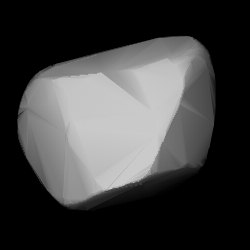
Asporina is a sizeable main-belt asteroid. It is classified as one of the few A-type asteroids.

Nenetta is an A-type asteroid with a diameter of 38 km. It was discovered by Auguste Charlois on 10 March 1890 in Nice, France. The asteroid is orbiting the Sun at a distance of 2.87 AU with an eccentricity (ovalness) of 0.204 and an orbital period of 4.87 yr. The orbital plane is inclined at an angle of 6.7° to the plane of the ecliptic.

Gordonia is a fairly typical, although sizeable Main belt asteroid.

Goberta is a mid-sized Themistian asteroid that was discovered by French astronomer Auguste Charlois on 8 September 1891 in Nice.
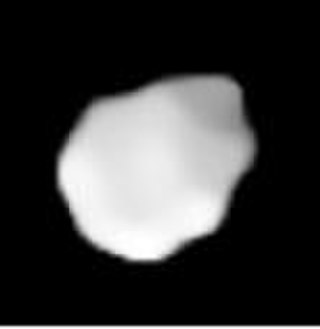
Eleonora is a large, stony main-belt asteroid that was discovered by the French astronomer Auguste Charlois on January 17, 1893, in Nice.

Aspasia is a large main-belt asteroid that was discovered by French astronomer Auguste Charlois on 9 December 1895 in Nice. It is classified as a CX-type asteroid.
Hungaria is a relatively small asteroid orbiting in the inner asteroid belt. It is an E-type (high-albedo) asteroid. It is the namesake of the Hungaria asteroids, which orbit the Sun on the inside of the 1:4 Kirkwood gap, standing out of the core of the asteroid belt.
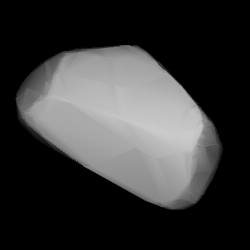
Iva is a main-belt asteroid orbiting the Sun, not to be confused with 1627 Ivar. It was discovered by American astronomer R. S. Dugan on 4 November 1902, and was named for Iva Shores, the young daughter of the family where he was staying in Heidelberg. This object is orbiting at a distance of 2.85 AU with a period of 4.82 yr and an eccentricity of 0.3. The orbital plane is inclined at an angle of 4.8° to the plane of the ecliptic.
Marbachia is a minor planet orbiting the Sun. It was named after the German city of Marbach on the river Neckar, birthplace of the writer Friedrich Schiller. This is classified as a D-type asteroid, although it displays a type of polarimetric behavior that is a characteristic of the "barbarians" class. Light curve analysis based on photometric data show a rotation period of 4.587±0.001 h with a brightness variation of 0.30 in magnitude.
608 Adolfine is a minor planet, specifically an asteroid orbiting in the asteroid belt.
619 Triberga is a main belt asteroid discovered on 22 October 1906 by August Kopff at Heidelberg-Königstuhl State Observatory. Since it has an orbit that repeats itself almost exactly every four years with respect to the position of the Sun and Earth, it has been suggested as a way to calculate the mass of the Moon. Triberga was named for the German town of Triberg.
707 Steina is a minor planet, specifically an asteroid orbiting in the asteroid belt.
710 Gertrud is a Themistian asteroid, which means it is a member of the Themis family of asteroids. It was discovered by Austrian astronomer Johann Palisa on 28 February 1911 from Vienna.

847 Agnia is a minor planet orbiting the Sun. It is approximately 28 kilometers in diameter.
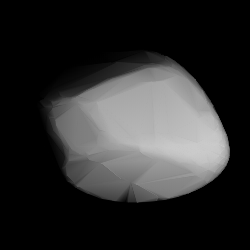
1187 Afra is a dark background asteroid from the central regions of the asteroid belt. It was discovered by German astronomer Karl Reinmuth at Heidelberg Observatory on 6 December 1929. The X-type asteroid has a rotation period of 14.1 hours and measures approximately 32 kilometers in diameter. The origin of the asteroid's name remains unknown.
1216 Askania, provisional designation 1932 BL, is a stony Florian asteroid from the inner regions of the asteroid belt, approximately 9 kilometers in diameter. It was discovered on 29 January 1932, by German astronomer Karl Reinmuth at Heidelberg Observatory in southwest Germany. It was named after the company Askania Werke, a German manufacturer of precision instruments.
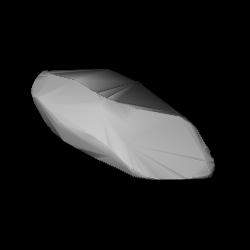
2094 Magnitka (prov. designation: 1971 TC2) is a Flora asteroid from the inner regions of the asteroid belt, approximately 12 kilometers (7.5 miles) in diameter. It was discovered on 12 October 1971, at and by the Crimean Astrophysical Observatory in Nauchnyj, on the Crimean peninsula. The discovery has not been attributed to an observing astronomer. It was later named for the city of Magnitogorsk.












